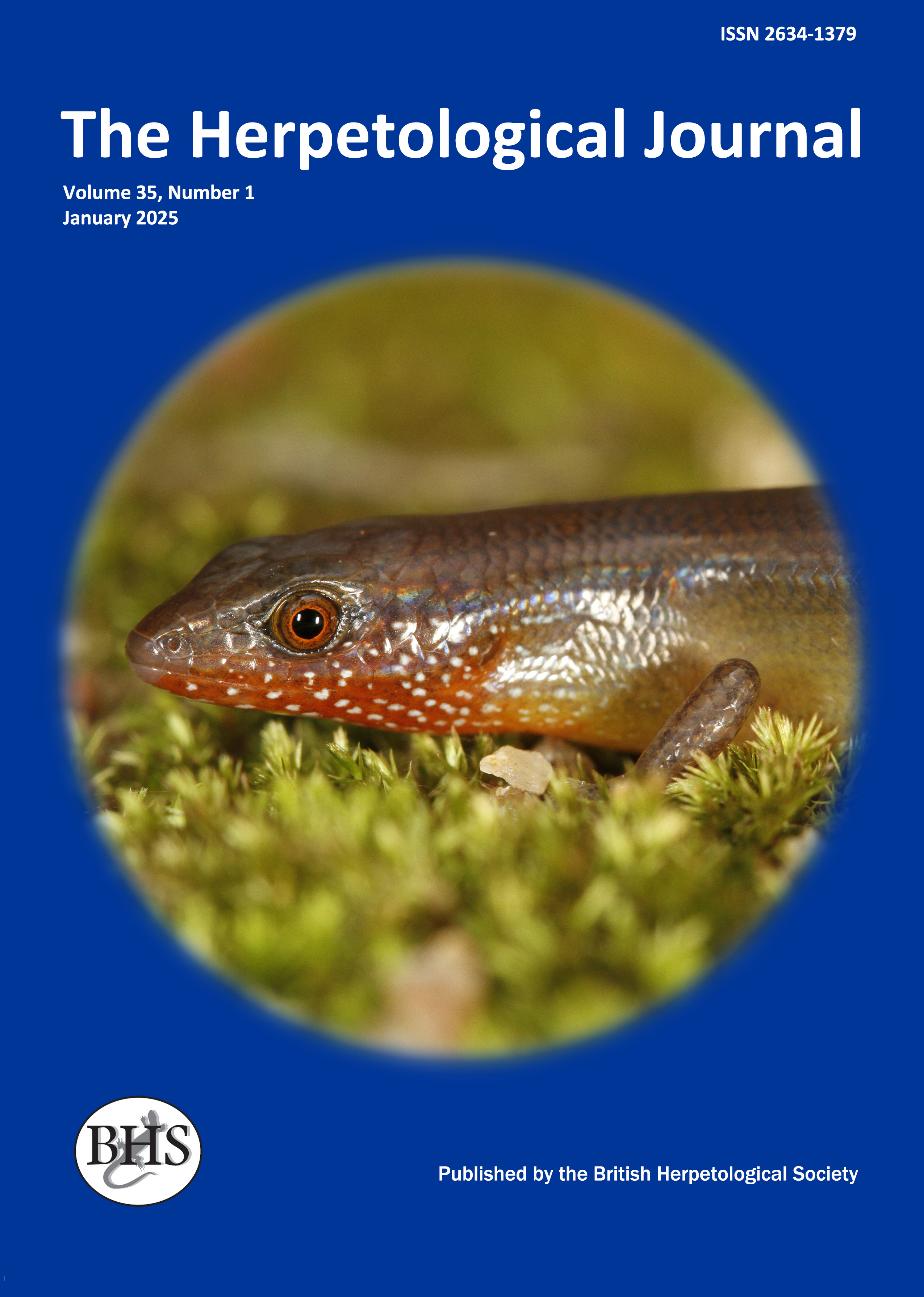
The Herpetological Journal
The Herpetological Journal is the Society's prestigious quarterly scientific journal. Articles are listed in Biological Abstracts, Current Awareness in Biological Sciences,Current Contents, Science Citation Index, and Zoological Record.
ISSN 0268-0130
2021 Impact Factor from Clarivate for the Herpetological Journal is 1.194, an increase of 0.332 from 2020.
pdf 05. Patterns of space, time and trophic resource use by Tropidurus hispidus and T. semitaeniatus in an area of Caatinga, northeastern Brazil
859 downloads
Open Access
pp. 27-39
Authors: Gomes, Fabíola Fonseca Almeida; Caldas, Francis Luiz Santos; dos Santos, Rafael Alves; da Silva, Bruno Duarte; Santana, Daniel Oliveira; Rocha, Stéphanie Menezes; Ferreira, Anthony Santana & Faria, Renato Gomes
Abstract: This study examines how two species of diurnal lizards (Tropidurus semitaeniatus and T. hispidus, Tropiduridae) use spatial, trophic and temporal resources in the Conservation Unit of Monumento Natural Grota do Angico, Poço Redondo, Sergipe (Brazil). Both species were mostly active during sunny days, with a reduction in activity during the hottest hours, and showed a preference for rocks, using rock crevices as main shelter. Tropidurus hispidus is the larger species as measured with SVL, and the species did not markedly differ in overall body shape. Both species mostly predated ants, insect larvae and termites. The head morphologies of T. semitaeniatus and T. hispidus are better adapted for the ingestion of larger and longer prey, respectively. Tropidurus semitaeniatus individuals modified their food intake during periods of higher rainfall, possibly to avoid competition with T. hispidus. Despite the high overlap in the use of space, time and diet, the coexistence of the two species is facilitated through resources strategies that minimise the negative effects of competition.
Keywords: SYMPATRY, ECOLOGY, LIZARDS, RESOURCE PARTITIONING, DRY FOREST

